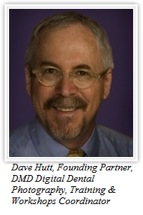Shade Communication - Part 1: CamerasWelcome to the first of our two part blog series about Doctor/Lab Communication and Photography. This first post features dental photographer, Dave Hutt. Dave will get us going on learning about camera hardware, the science behind it and how to use it. The second post will be authored by our Head Ceramist, Gary Nunokawa. If you’ve ever wondered which photos, angles and exposures are really important to an accomplished dental ceramist, this will be a good read. Dene Lebeau
0 Comments
Your comment will be posted after it is approved.
Leave a Reply. |
Dental Street Blog
Categories
All
Archives
November 2022
|
|
|
HoursM-TH: 7am - 4pm
PST |
Telephone425-251-3535
|
|
Copyright © 2011 LeBeau all rights reserved Website created by: Cuddy Connections LLC.



 RSS Feed
RSS Feed
